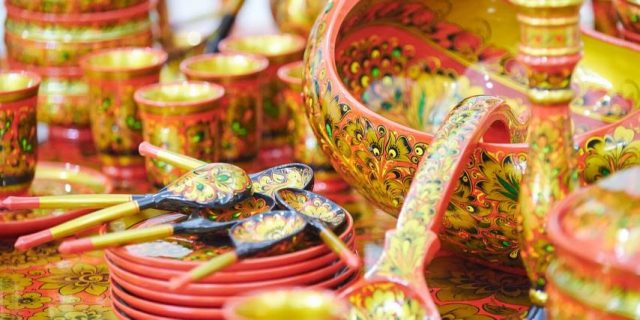
RUSSPASS digital travel service has prepared a compilation that allows you to take a virtual journey through Russia and delve into the history of its peoples. The online magazine RUSSPASS Mag tells the story of eight towns made famous by their craftsmen.
The first town is Gzhel. The namesake world famous type of painting has been in existence for seven centuries and is a hallmark of Russia. Readers will find out in which region of the country the craft originated, how the painted products are created, and where they can be seen and even attempted on your own today.
The cosy urban village of Palekh in the Ivanovo region is famous for its unique black and red wood-painting. Everyone has seen these incredibly graceful black boxes with czarevitch, frog, three-horse and other fairy-tale symbols. The village is also considered the home of the Firebird.
The village of Zhostovo, not far from Mytishchi, is known for the production of the most beautiful metal trays. The article details the history of this type of craft.
Among the folk crafts also worth mentioning is the technology of producing Pavlov Posad shawls. This accessory has repeatedly inspired European designers to create their own collections in the Russian style. Users will find out how and in which town near Moscow the art of embroidered shawls originated.
Another easily recognisable technique is khokhloma. The main elements of khokhloma are red, juicy berries, flowers, and golden leaves. The article discusses when and where this folk craft originated, and which elements of everyday life are usually decorated with khokhloma.
The next town is Torzhok, famous for its gold embroidery. Our readers will learn what was embroidered with golden threads in the past, and where they can see the samples of ancient embroidery.
Users will be interested to learn about such craft as Vologda weaving. Traditions of Vologda weaving can be traced back to the XVI-XVII centuries, when rich landowners demanded that their peasants imitate Western European outfits in their decoration and make a new hit of the season – lace. At various times, seamstresses weaved lace with animals, flowers and even Soviet symbols on bobbins.
Finally, readers will get acquainted with such a rare occupation as Kholmogory bone carving which still exists in the Arkhangelsk region. Kholmogory carving is a manufacture of unique objects from a bone, often even mammoth. The carved bone resembles lace, but looks more powerful and mysterious, like anything capable of surviving several centuries.





